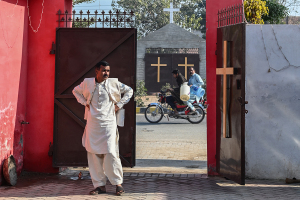Nathan Verhelst, Transgender Man, Chooses Euthanasia After Failed Sex Change Operation
'I Was The Girl That Nobody Wanted,' Said Nathan, Born Nancy
Nathan Verhelst, a transgender man who was born a girl, called Nancy, decided to end his own life through euthanasia after a botched sex change surgery. The 44-year-old Belgian had been undergoing hormone therapy since 2009, but the gender assignment surgeries in 2012 did not meet his expectations, and he opted to die by a state-sanctioned lethal injection on Monday.
Nathan Verhelst had several surgeries to alter his appearance from that of a woman's to a man's. He underwent a mastectomy and had operations to construct a penis last year. However, when Nathan saw the results, he was left unsatisfied. "I was ready to celebrate my new birth. But when I looked in the mirror, I was disgusted with myself," he told Het Laatse Nieuws in Belgium. "My new breasts did not match my expectations and my new penis had symptoms of rejection. I do not want to be … a monster."
Before Verhelst could die by euthanasia, he had to abide by Belgian law, which states consultations with doctors and months of counseling. Belgium and the Netherlands are the only countries that allow voluntary euthanasia, while Switzerland and two states in the U.S. allow assisted suicide. Verhelst died by lethal injection Monday at the hands of Wim Distelmans, a cancer specialist.
While the death of Verhelst has ignited the fire of debate surrounding euthanasia- Belgium is now considering the controversial medical practice be made available to minors- some wonder if Nancy should have had access to gender reassignment surgery in the first place. Verhelst was open about his emotionally abusive upbringing, saying that his mother despised him for being born a girl, and could have suffered psychological damage.
"While my brothers were celebrated, I got a storage room above the garage as a bedroom. 'If only you had been a boy,' my mother complained. I was tolerated, nothing more. I was the girl that nobody wanted," Verhelst explained.
Even after her child's death, Nathan's mother seemed just as callous.
"When I saw Nancy for the first time, my dream was shattered," the unnamed woman admitted. "She was so ugly. I had a phantom birth. Her death does not bother me."
Verhelst's death has highlighted Belgium's euthanasia problem. Since the law's introduction in 2002, the practice has only increased. 1,133 people were euthanized in 2011, compared to 1,432 in 2012- that's a 25 percent increase in one year, equal to about 2 percent of the deaths in Belgium.
The Netherlands are suffering a similar fate, with 1 in 30 deaths now being by euthanasia or assisted suicide. There is also a charity that operates private mobile euthanasia units, traveling door-to-door offering death.
Suicide has hit the transgender population particularly hard, with rates as high as 31 percent, studies suggest.
"Research we conducted a decade ago found there is huge uncertainty over whether changing someone's sex is a good or bad thing," Chris Hyde, professor at the University of Exeter, told the Daily Mail. "There's still a large number of people who have the surgery but remain traumatized- often to the point of committing suicide."
While defenders of euthanasia say that Nathan's right to die was about individual freedom and leaving a life he no longer wanted, others suggest that Verhelst's death was a tragedy.
"Nathan Verhelst didn't 'need' an assisted death- he needed love," wrote historian Dr. Tim Stanley for The Telegraph U.K. "It is to the shame of all us that we failed to give it, offering him pointless annihilation instead."





























